Welcome, Commander players! This primer is on the basics of playing Azorius in Commander, and is part of a ten-part series that covers all of Magic’s two-color pairs. In this series, we go through the strengths and weaknesses of each color pair, as well as common play styles. You can read our other primers so far: Simic, Selesnya, Rakdos, Boros, Izzet, and Golgari.
In his article about Azorius, Mark Rosewater described the color pair:
Philosophically, the largest overlap between the two colors stems from a similar motivation. Both colors want to improve the world. White does this in its quest to promote peace, while Blue does it out of its interest in reaching perfection. The end result is the same. Both colors like to force its rules and ways upon all those around them.
Now eight years later, this still fits for the world of blue-white Commander. Azorius is a mainstay color pair in 1v1 formats, but does that translate well into the world of multiplayer?
Strengths
Removal: When it comes to interaction, Azorius players have no shortage of options. White has the ability to remove any permanent on board, regardless of permanent type. It accomplishes this through destruction-based spells like Generous Gift, or exile effects like Return to Dust. As for multicolored spells, Fractured Identity costs a lot but even higher in value. After all, the only thing better than one Marit Lage is three Marit Lages.
Blue does have targeted removal as well, with cards like Reality Shift and Pongify. However, the lion’s share of blue’s removal comes from “removal” of spells on the stack, i.e: countermagic. A blue player can use the likes of Swan Song and Counterspell to eliminate problems before they happen. When it comes to multicolored counterspells, Dovin’s Veto and Render Silent are two mainstays, and are well worth the tougher casting cost.
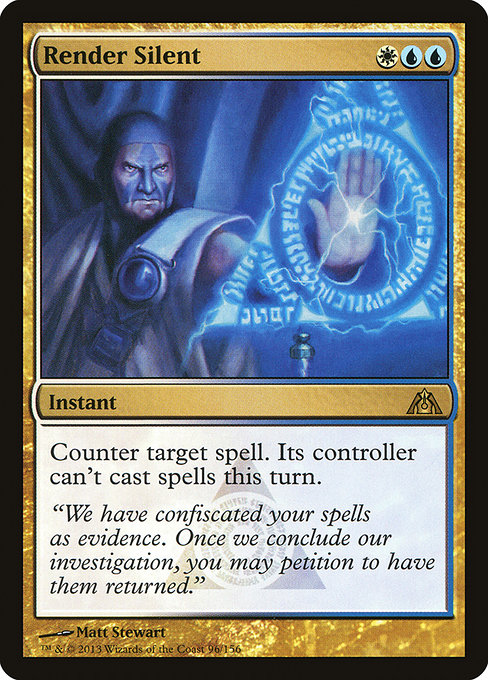
Some Azorius removal is related to temporary effects, which lead to varied results. Single target bounce spells are fine for 1v1 play, but don’t move the needle in a format that has three opponents to handle. The tempo gained hindering one player doesn’t give enough time to get through to the two unaffected players. For these reasons, cards like Vapor Snag don’t see play. However, in a deck like Brago, King Eternal, Reflector Mage can be a worthwhile option. Deputy of Detention and Spell Queller are viable in formats like Pioneer and Modern, but with three opponents to answer them in Commander, they can fall short.
Artifact Synergy: Azorius is no stranger to using artifacts to its advantage. Both colors can tutor for artifacts, with cards like Enlightened Tutor, Fabricate, and Tribute Mage. Raff Capashen, Ship’s Mage can bring them in at instant speed, while Padeem, Consul of Innovation can keep them from being targeted. Urza, Lord High Artificer is a powerful engine that turns all of your artifacts into mana sources, and Hanna, Ship’s Navigator can grab your pieces that were recently removed.
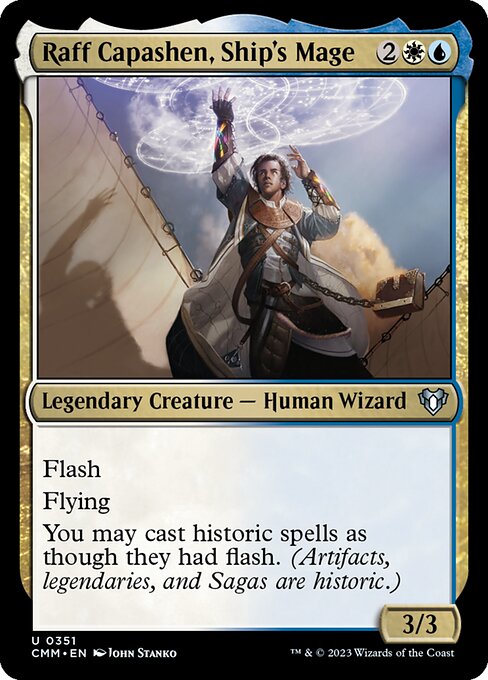
In the Azorius artifact shell, it’s totally doable to drop Mycosynth Lattice and Memnarch, allowing you to steal anything out on board. Additionally, Darksteel Forge and Nevinyrral’s Disk allow for repeatable board wipes that can shut a game down.
Card draw/selection: Similar to Selesnya, Azorius relies on the nonwhite side for relevant card draw. Treasure Cruise, Windfall, and Rhystic Study are all format staples in blue, and allow the caster to see plenty of new cards for minimal cost. The list goes on after that, with other heavyweights like Consecrated Sphinx, Fact or Fiction, and Mystic Remora to round out the package.
There are plenty of large-scale spells available, but their results vary wildly. Finale of Revelation and Pull from Tomorrow exist in this space, but fall short due to lack of mana ramp.
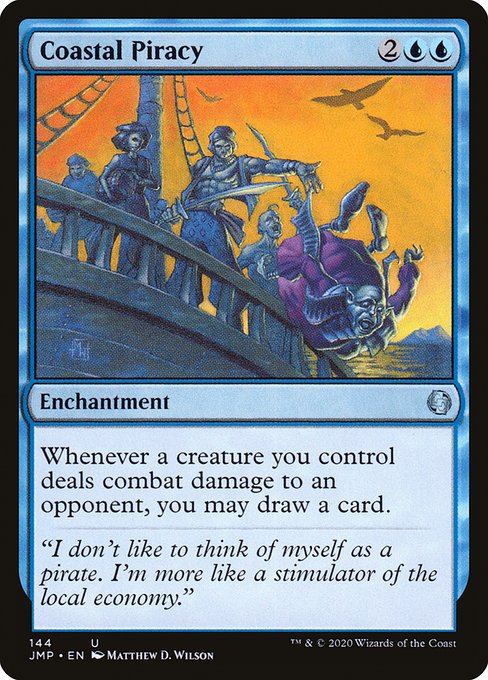
As for aggro-based strategies, cards like Bident of Thassa and Coastal Piracy help supplement having evasive creatures out. Kindred Discovery is an absolute all-star in this category, since it helps boost Azorius tribal decks in this space.
Both blue and white have a swathe of conditional tutors to choose from. While they can’t grab anything like Demonic Tutor, they lean towards noncreature spells. Enlightened Tutor and Fabricate are commonly-played for artifact and enchantment-heavy decks. As for instants and sorceries, Mystical Tutor, Merchant Scroll, and Spellseeker see play. Due to their conditional nature, though, these tutors aren’t applicable everywhere.
In light of white’s shortcomings on card draw, the strength of blue goes a long way. That alone gives an Azorius player plenty of ways to refill their hand. Also, both colors pair well with tutoring for key pieces to their strategy.
Board Wipes: Azorius offers a healthy suite of options to clear the board, but with some implications to consider. Nearly all of them are symmetrical, which can put you at a disadvantage. With the lack of powerful mana ramp, you run the risk of being left behind if precious mana artifacts get destroyed. Dance of the Manse and Open the Vaults are two ways of recovering these lost cards, but they come at a high price, especially when compared to the likes of Heroic Intervention and Boros Charm. While cards like Supreme Verdict and Austere Command are in the toolkit, it’s your recovery, or lack thereof, that makes all the difference.

Cyclonic Rift is the most effective board wipe in the Azorius arsenal. Due to the lack of powerful ramp, though, it’s more likely to come down at a later turn, as compared to a Simic or Bant deck. That factor has to be kept in mind if you happen to see Rift in your opening hand.
An underappreciated aspect of Azorius, though, is the ability to back sweepers up with countermagic. Board wipes can be costly spells to commit mana towards, which leave you exposed to answers from your opponents. However, any untapped blue mana can represent Swan Song, or other ways to protect the sweeper on the stack. Even if you don’t have the counterspell in hand, the threat is always there; that will influence the decisions made by your opponents.
Reusing Enter the Battlefield Effects: Azorius is the guild to pick if you want to flicker your permanents. With cards like Soulherder, Ghostly Flicker, and Brago, King Eternal, there are a multitude of ways to reuse your ETB effects. That leads to more value off the likes of Spellseeker, Snapcaster Mage, and Sun Titan.
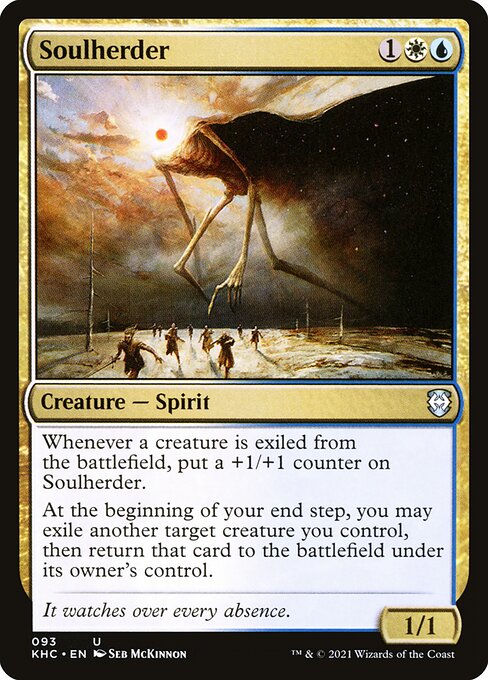
Mystic Sanctuary is the most recent tool in this category, offering infinite loops with cards like Deprive and Cryptic Command.
Weaknesses
Ramp: Azorius decks yearn for more ways to ramp mana. This is arguably the biggest reason why more blue-white decks aren’t seen at the table—or why they take the form of Bant decks like Roon of the Hidden Realms or Derevi, Empyrial Tactician. Smothering Tithe is a step in the right direction, but is still only one card in a 100-card deck.
From there, the heavy lifting is largely done by artifacts like Sol Ring and Azorius Signet, which are fragile to removal. Additional ramp and fixing are possible through things like Wayfarer’s Bauble and Myriad Landscape; and yet, it’s still always a step or two behind other decks at the table. These cards help, but they’re nowhere close to the likes of Nyxbloom Ancient, Cabal Coffers, or Dockside Extortionist, to name a few.
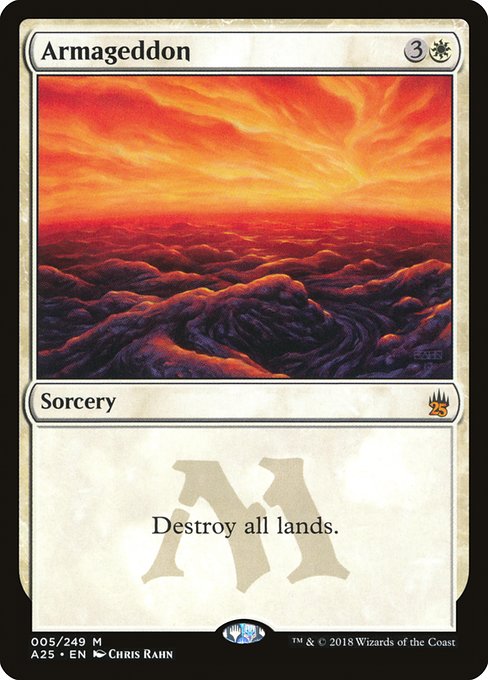
A unique aspect to this problem is that white gives Azorius access to mass land destruction. However, in spite of things like Armageddon and Cataclysm, the social contract of many commander circles cause these cards to stay on the sideline. While in a game design lens, Azorius has some tools to keep those other colors in check, the nature of most Commander circles prohibit this.
Closing Speed: In other formats, Azorius is a popular color pair for control decks and tempo-based strategies. One slowly grinds down the opponent, and wins off the back of a card like Dream Trawler or Teferi, Hero of Dominaria. The other assembles a few threats on board, like Spell Queller and Geist of Saint Traft, and protects them all the way to the finish line. These kinds of cards, and the strategies around them, make Azorius a potent threat in Limited and 1v1 constructed. However, these strategies don’t always translate well into the multiplayer world. This can leave players wanting for more blue-white cards that have a big “I win!” moment tacked on to them. Azorius decks don’t usually win out of nowhere in other formats, so that makes for less options to choose from in Commander.
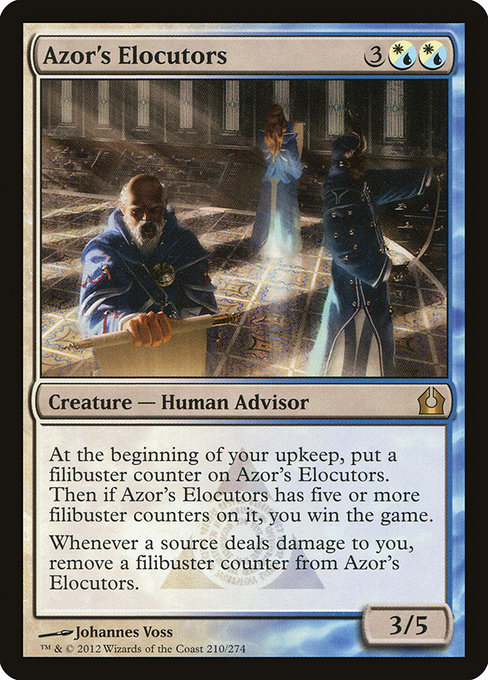
Commander games can vary wildly from turn to turn, and see multiple attempts to win from different players. Haymaker cards like Torment of Hailfire, Triumph of the Hordes, and Insurrection can win a game out of nowhere. The toolkit for Azorius consists largely of cards that made waves in 1v1 play, so the player has to get more creative in this department. A Dream Trawler means a lot less when it has to attack two extra opponents. Those are two extra opponents that can attack into Teferi, who was widely considered a scourge of a win condition in Dominaria Standard.
Expropriate is commonly-touted as a game-winning card, but the Azorius list starts to fall off pretty rapidly after that. Approach of the Second Sun has had it’s own time in the sun, but it requires careful timing and a multi-turn commitment to playing. This also puts a target on the back of the Azorius player; even though someone may be sitting with an Exsanguinate in their hand, players are more likely to go after the threat they know about than one that hasn’t revealed itself yet.
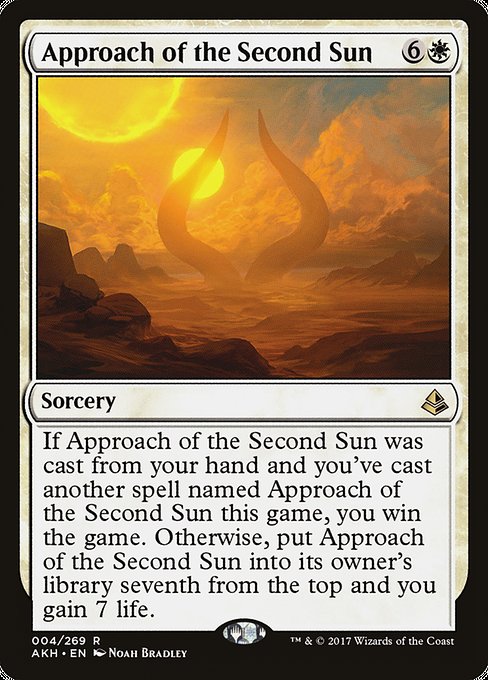
Games can come down to the question of “What can I do win on this turn?” Unless the Azorius player has a way of stalling their opponents through control, or digging for a game-breaking combo, they can be left wanting for more closing speed. Because of this, plenty of Azorius decks rely on more punishing tactics, like prison strategies, multiple board wipes, or hard control. This can make for a difficult play style to pilot; the Azorius deck might not be the strongest at the table, but players are predisposed to go after the things that keep them in check. A player’s Azorius strategy could be deemed “unfun” by others, and cause a bigger target on their back than what’s necessary.
Common Commanders and Archetypes
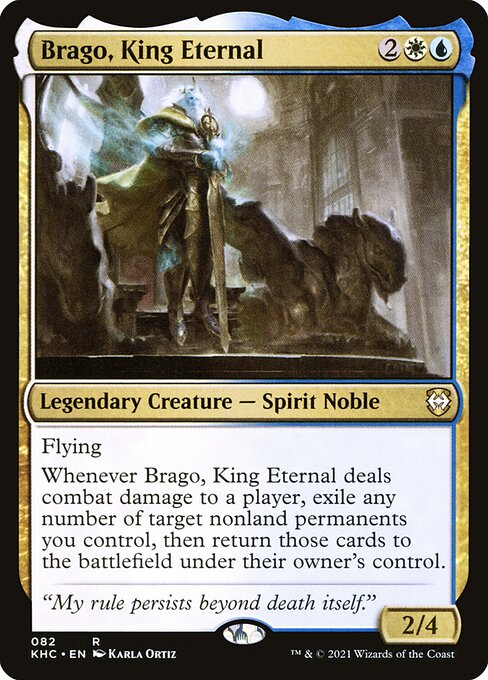
Blink: This is far and away the most popular strategy for Azorius players, and it’s poster child is Brago, King Eternal. If you like the idea of flickering Spellseeker each turn with something like Soulherder, then this is your strategy. It allows for a healthy amount of card advantage, since you’re getting repeated uses out of the things you already have on board. Ephara, God of the Polis and Lavinia of the Tenth are other playable options in this space.
Stax: Azorius is a popular choice for these prison-style decks, which often seal the win after multiple turns of setting up lock pieces on the board. Historically, these are usually noncreature-heavy strategies, with cards like Winter Orb, Aura of Silence, and Sphere of Resistance. There isn’t always a clear-cut “I win!” moment, but these strategies offer a way to shut down opponents and keep them from trying to break the game in half.
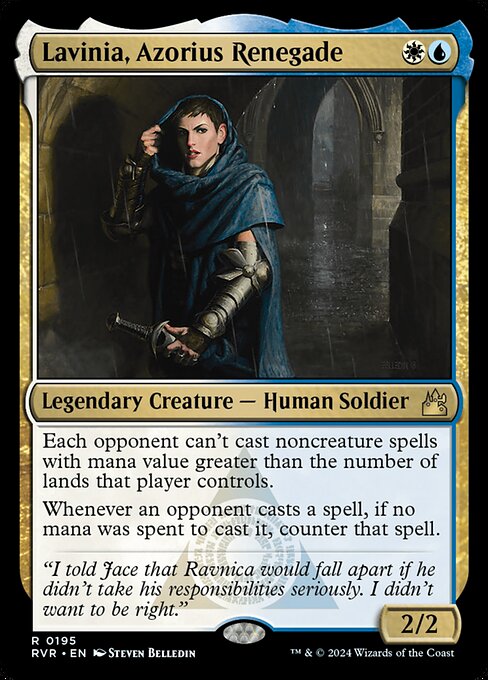
It’s not unusual to see these decks with a combo win built into them, as a way of finishing the game. However, it isn’t always necessary to get the concession from opponents. Grand Arbiter Augustin IV and Lavinia, Azorius Renegade are two popular options in this category. Brago, King Eternal can also dip his toes into this category, by flickering cards like Tangle Wire.
Auras/Voltron: Bruna, Light of Alabaster is the reason to play an aura-heavy deck in Azorius. Compared to equipment-based Voltron decks, auras are more fragile since they go to the graveyard after the creature is removed. However, Bruna has built-in recursion to get around that, so long as you can attack with her. Outside of Bruna, Geist of Saint Traft and Daxos of Meletis are potent threats in this category.
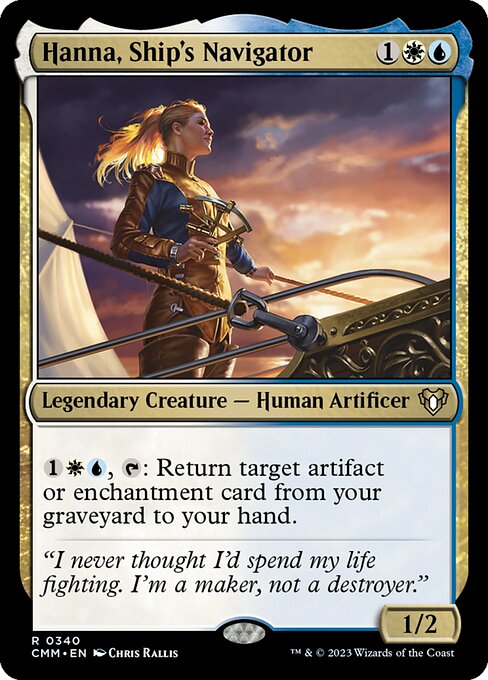
Artifacts: Raff Capashen, Ship’s Mage and Hanna, Ship’s Navigator lead the charge here. They employ a variety of powerful artifacts to control a game, like Master Transmuter, Mindslaver, and Memnarch. Blue-white control cards back their strategy up, alongside things like Darksteel Forge and Open the Vaults.
Control: Policing three other players is difficult, but not impossible. Control decks in 1v1 formats play a lot of one-for-one interaction, as well as incremental ways to go up on cards relative to your opponents. Since there are three opponents to manage in Commander, a control player has to place more of an emphasis on answering more threats for the price of one. They also need greater card draw potential to keep up with the rest of the table. Dragonlord Ojutai and Azor, the Lawbringer are worth a look, since they both offer card draw engines stapled onto them.
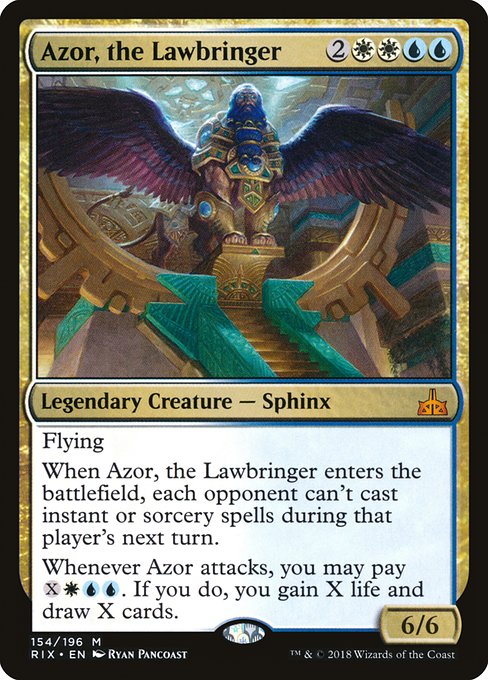
Tribal: Azorius is the guild of evasive creatures, so these tribes shouldn’t come as a surprise. Kindred Discovery is an absolute all-star here, since these are the more aggressive decks in the Azorius space. Kangee, Aerie Keeper leads the efforts of Birds players, and will display old favorites like Crookclaw Elder and Aven Brigadier, a.k.a. “Sam the Eagle.” Sygg, River Guide leads Merfolk decks, Geist of Saint Traft is for Spirits, and there are a variety of Sphinx legends to choose from, like Isperia, Supreme Judge.
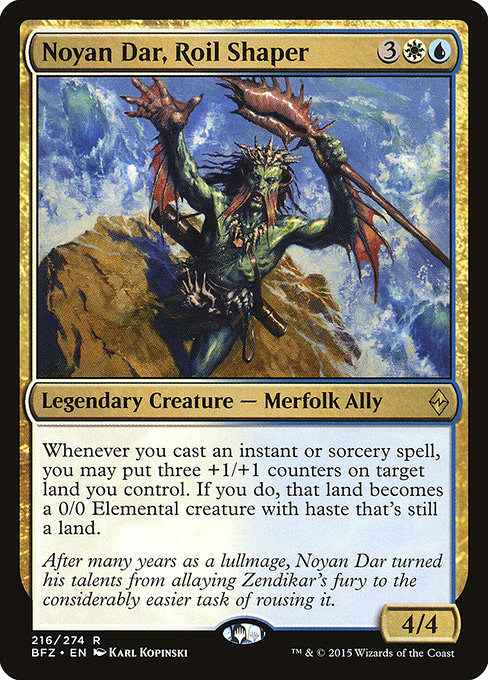
Other Oddities: When we get into the weeds, there are some wacky things that Azorius has to offer. Taigam, Ojutai Master is a spellslinging deck based around the Rebound mechanic. Noyan Dar, Roil Shaper is a land-heavy strategy that wants to animate your plains and islands to attack. Temmet, Vizier of Naktamun is a token strategy that prefers to go tall instead of wide. Gwafa Hazid, Profiteer helms a political, pillow fort-style deck, and Medomai the Ageless wants you to take as many extra turns as possible.
Final Take
Azorius is one of the most interactive two-color pairs you can play in Commander. You have a wide variety of answers and removal to choose from, so it favors the player that keeps a close eye on the happenings of the game. Yet it suffers from a lack of mana ramp, which can cause it to be left behind other decks at the table. Azorius card advantage engines are potent, and allow the pilot to generate tons of value throughout the game; but they can be slow to end games. Nevertheless, for those of you that favor the grind, and the chess match nature of long games, Azorius is the guild to consider for your next project.
Travis is a Virginia-based player and writer, who has been turning things sideways since Starter 1999. He primarily plays Commander, Pauper, and Legacy, and has a passion for introducing new players to the game. When he isn’t making people pay the Thalia tax, he can be found mountain biking or playing the guitar. You can follow his exploits here on Twitter and Instagram.

